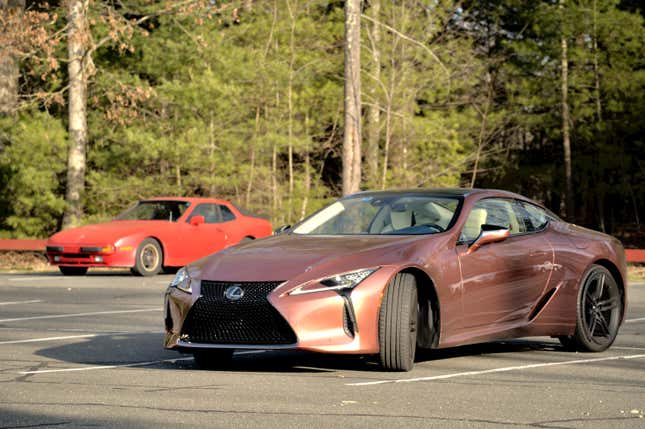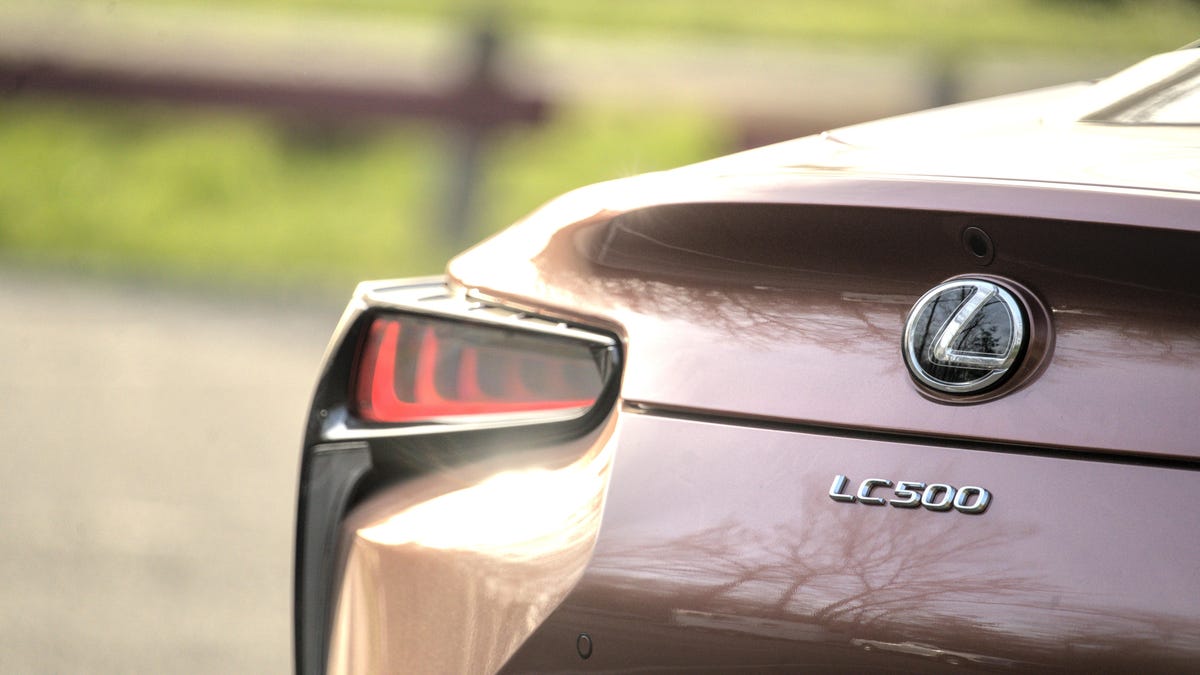Earlier this year, I spent nearly 1,000 miles in a Lexus LC 500 coupe on a road trip to visit my old college town. It was a fantastic road trip companion, a car I could’ve spent days and days in, but there was something more to it than that: Familiarity. Somehow, this $111,550 car — something I could never afford to look at outside of a loan or press event — felt like a old friend.
After a few hundred miles or so, I figured out how exactly that worked. It wasn’t that Lexus engineered the LC 500 to immediately feel like home, the way the Acura Integra does, but instead that the Lexus’ character harkened back to something from my own past: The Scion FR-S I owned back when I was daily driving those Rochester roads. Despite all the comfort, the power, and the sophistication, the LC 500 preserves some of its little brother’s sports-car spirit.
Full Disclosure: Lexus loaned me an LC 500 for a thousand-mile road trip, making it the most expensive car I’ve ever street parked in Brooklyn.

The LC 500 is, in almost every way imaginable, a very different car to my old FR-S. They’re both front-engined, rear-wheel-drive, four-seat coupes designed by Toyota, but that’s about all they share. The Lexus is a high-dollar exercise in comfort and luxury, while the Scion cost me $14,000 out of the back of a central New York dealer’s fresh trade-in lot. The Lexus has a 471-horsepower V8 engine mated to a laggy automatic transmission, while the Scion has a fantastic manual gearbox bolted to some sort of small four-cylinder tractor motor. The Lexus comes from Toyota City, the Scion comes from a Subaru plant in Gunma. They should not, by all logic, feel similar.
Yet, in defiance of all known laws of aviation sense, they do. The Lexus’ suspension is softer, more compliant over bumps and more wallowy in traffic, yet when thrown into a corner it communicates through the steering wheel like that stiffer Scion. The LC is bigger, heavier, and more powerful, yet it never feels lumbering or built only for straight-line speed when compared with the smaller, lighter, slower FR-S.
That’s not to say the two cars feel the same, but that they speak to their driver in the same language. Like C-3PO talking to Owen Lars’ moisture vaporators, vehicles all have their own little intricacies in how they communicate, their own dialects. From opposite ends of Toyota’s sports car spectrum, the LC 500 and the FR-S communicate in the exact same way. Learn to get along with one, and the other will come to you just as naturally.
The LC 500 is bigger, faster, smoother, and more comfortable than a little Scion FR-S, but a blindfolded driver would be able to tell from behind the wheel that the two share familial ties. Their character isn’t just the result of how they’re designed and assembled, but of hundreds of thousands of little choices everywhere in their development — choices made, in both cases, by Toyota. They’re brothers, with their own little secret language.


